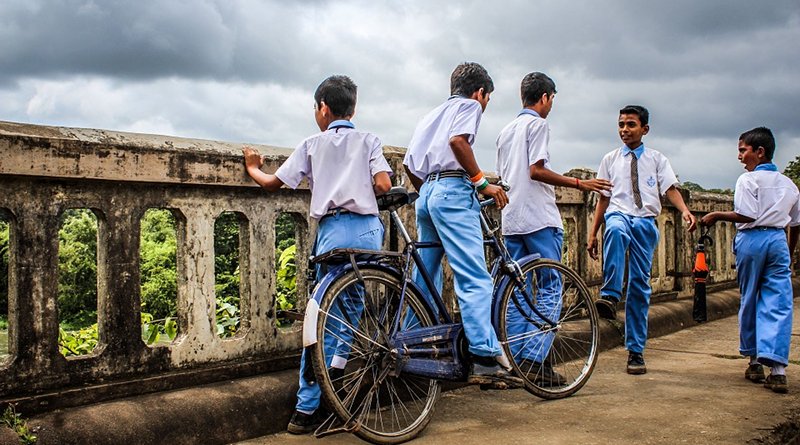Frankly Speaking: School Safety As A Concept Matters – OpEd
Introduction
Safety in school is a microcosm of safety in society, its social institutions and beyond. Squelch, 2001, has defined, a safe school as one that is free from danger and possible harm, where non-educators, educators and learners can work, teach and learn without fear or ridicule, intimidation, harassment, humiliation or violence.
To gain a better understanding of school safety requires close attention to the second part of this definition, that stress an environment which provide physical, social and psychological safety to every individual in school. It is possible with whole school approach. For this schools must link their safe school policy to the school ethos and values, curriculum, interpersonal relationships, effective partnerships with parents and services in the wider community. Though creating safe learning environment is normal part of a school’s mission statement (Harris, 2011), but most of the times the narrow focus on security in schools undermine the effectiveness of the costly measures that are adopted. This prevent administrators from taking actions to address the overall quality of the educational environment.
Current Scenario
In the last few years, crimes against children, from murder to rape to sexual assault, has made Indian schools realize the importance of having a proper security arrangement to meet unsafe eventualities. But, a large number of schools across the country are still to develop approaches to create safe and sustainable school environment. The question that remain is; what concrete steps have the government and private schools taken to provide school safety? What safety norms have they set for the school? Unfortunately, schools compromise gravely over the safety norms, even the schools that charge exorbitant fees for tuition, transport and hobbies, are unable to curb the increasing unsafe incidents within the schools.
Issues and Challenges
Certainly, developing school safety strategies is not easy especially in the current times when there are many potential threats to school safety. But it does not mean that schools can have a casual approach to safety of students. It is upsetting to note that having most modern technology these schools are not able to supervise their students more carefully. I think the safety measures that our schools had generations ago were safer than those with modern technology today. The old security systems were having a staff member stationed at the toilets, corridors and near gates who were vigilant enough to take care of school safety and avoid any unsafe incident to happen. In the present times schools do have CCTV installed, but not a dedicated security team to monitor cameras. It is hardly monitored. Thus it’s time for school leaders to have a proactive approach to deal with safety issues. School leaders need to motivate and engage staff, students, parents and the broader school community in the direction of creating a safe school environment that is both measurable and prevention-focused rather than solely reactive.
Case
I would like to bring a case of Rightway English Medium School located in Baroda. A school that has started three years ago has already set a benchmark compared to many big city schools when it comes to school safety and inclusive policy. The school has a safety policy at place and has formed a safety committee that includes teacher representatives from each section, student representative from each section and a peon. CCTV cameras are installed at strategic locations across school premises to ensure that a child’s day-to-day life in school is constantly being monitored and recorded for safety purpose. The school is vigilant and constantly on the lookout for any forms of child abuse, whether physical, emotional, or sexual. The staff is trained to understand key indicators of child abuse, and be prepared to respond instantly to inappropriate or harmful behaviour.
Every student in this school is provided with an RFID Identity Card. The identity card does more than just carrying information about the child. It helps the school leader to keep a check on their presence and at the same time message is conveyed to parent about student attendance. Every student thus is monitored in the school premises as it helps schools prevent from getting involved in any wrong moves. While surveillance cameras are used to monitor student activities, with security system, school make sure that students are at the right place at the right time, avoiding any hassles. School management has also train the school students to report any suspicious activities to the concerned person, by teaching them the importance of school safety and security. The school organize several activities at different levels to create awareness on safety and vigilance. Students organise a special assembly once in a month to sensitize students about the various wrong practices and how one should be vigilant.
Last Word
Usually the only effort in the name of safety put in by a large number of schools today are various circulars time and again issued by the school boards. These circulars keep advising schools to ban corporal punishment and use confidence building and positive strokes to improve the performance and behaviour patterns of the children. But the need of the hour is that schools have safety prevention and preparedness measures on a continuum and evolve and adapt to changing circumstances without losing the sight of primary objective of educating their students. School leaders should therefore recognize the continuum of threats to the safety of their schools and respond with a continuum of prevention and preparedness measures. This type of comprehensive and balanced approach to school safety is supported by decades of research and experience.
(Dr.Swaleha Sindhi is Academic Advisor for schools, her email id is [email protected])

